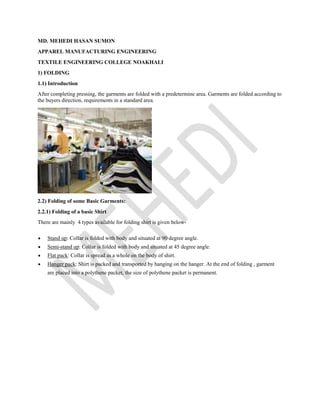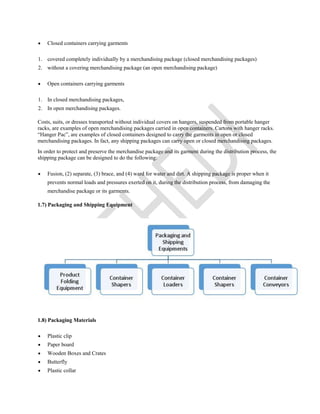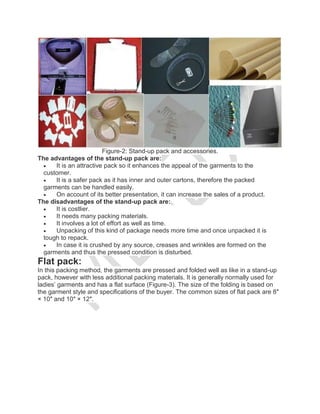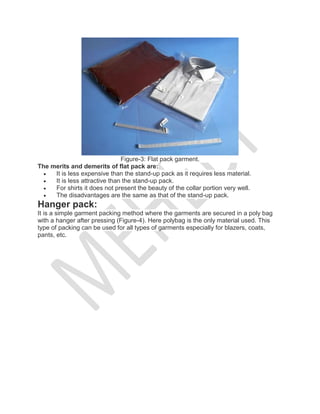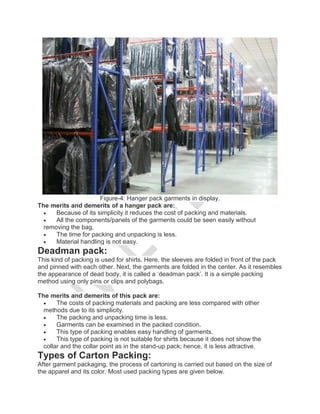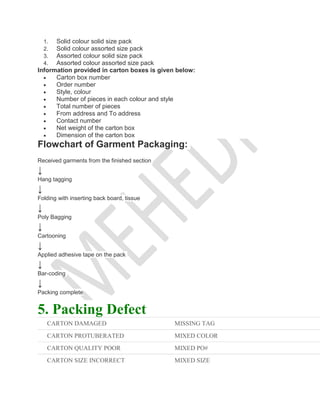The document discusses various methods of folding and packaging garments. It describes how to fold basic garments like shirts, t-shirts, and pants. There are four types of shirt folding: stand up, semi-stand up, flat pack, and hanger pack. Pants can be folded side-to-side or front-to-back. Garments are then poly-packed, bundled, and packed into cartons marked with important information. Packaging protects products and provides information to customers. Vacuum packaging reduces bulk, weight, and prevents wrinkles during shipping.
